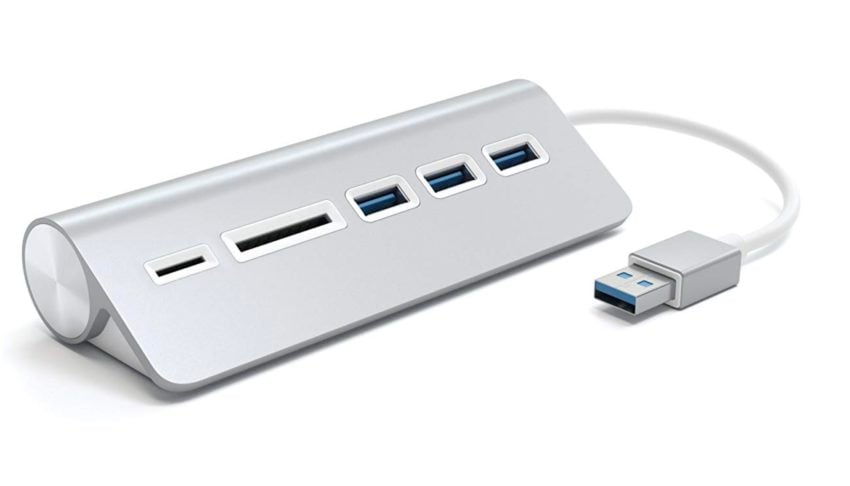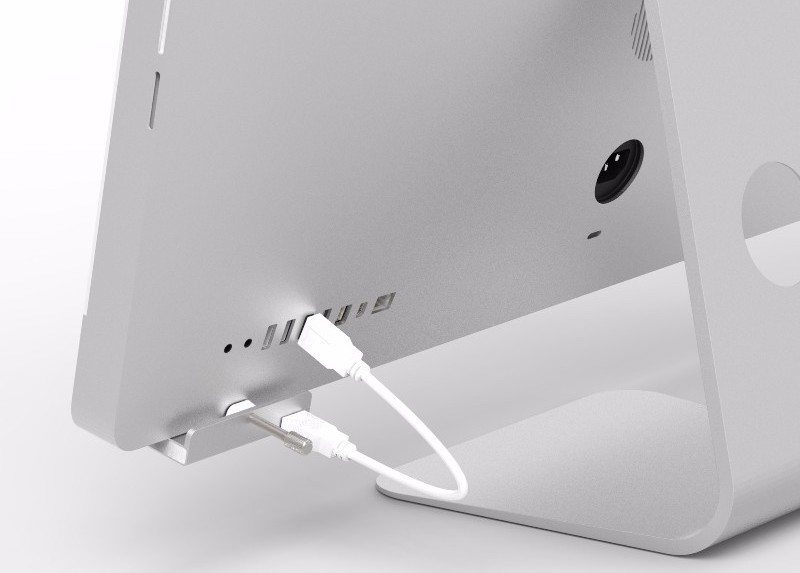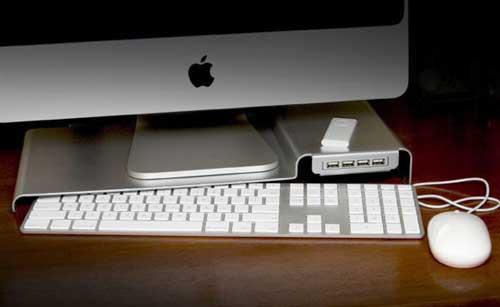Symptoms
Usb 3 Hub For Mac
USB 3.0 HUB, Wavlink Aluminum 3 Ports USB 3.0 Hub with SD/ Micro SD Card Reader Combo, Slim 5-in-1 Mini Dock, For MacBook, MacBook Pro, MacBook Air, Mac Mini, iMac, XPS, Surface Pro, PCs and Laptops Limited time offer, ends 09/14. Anker 10 Port 60W Data Hub with 7 USB 3.0 Ports and 3 PowerIQ Charging Ports for MacBook, Mac Pro/Mini, iMac, XPS, Surface Pro, iPhone 7, 6s Plus, iPad Air 2, Galaxy Series, Mobile HDD, and More. 4.1 out of 5 stars 2,692. Get it as soon as Tue, Feb 4. FREE Shipping by Amazon.
- Belkin's USB 3.0 4-Port Hub and USB-C cable let you continue to use your existing USB 3.0 peripherals with your new Mac. Four devices attached to the hub's powered USB 3.0 ports can connect neatly via a single cable to one USB-C port on your Mac, allowing fast, effortless charging and data transfer.
- Powered USB Hub 3.0, Atolla 7-Port USB Data Hub Splitter with One Smart Charging Port and Individual On/Off Switches and 5V/4A Power Adapter USB Extension for MacBook, Mac Pro/Mini and More. 4.5 out of 5 stars 995. FREE Shipping by Amazon. More Buying Choices.
Symptoms such as these could mean that a device connected to the USB-A , USB-C , or Thunderbolt 3 (USB-C) port on your Mac isn't getting enough power:
- A message says that the device needs more power, the operation can't be completed, or USB devices are disabled until you unplug the device using too much power.
- An operation that requires more power doesn't work. For example, writing to disk requires more power than reading from it.
- The device doesn't turn on or isn't recognized by your Mac.
Solutions
- Use your device as a self-powered device or connect it to a powered USB or Thunderbolt 3 (USB-C) hub if possible.
Self-powered devices get power from an electrical outlet or their own battery. Bus-powered devices get power from the device they're plugged into, such as your Mac. - Reduce the total amount of power needed from your Mac by reducing the number of bus-powered devices connected to your Mac, or using more of them as self-powered devices.
- If your device is plugged into another device (such as a display or multiport adapter) as part of a chain of devices, the other device might not be providing enough power or passing through enough power from your Mac. Plug your device directly into your Mac instead.
- Make sure that the port on your Mac and the cable you're using to connect it to your device both support the same or later USB specification as your device. For example, a device designed to support the USB 3 specification might not get enough power when plugged into a USB 2 port or cable.
- Try a different cable, in case the cable that you're using is damaged or defective. If you're using an adapter with your cable, the adapter could also be damaged or defective.
- If your Mac has multiple Thunderbolt 3 ports, connect your device to a Thunderbolt 3 port farthest away from the current port. For example, if your device is connected to the ports on the left side of MacBook Pro, connect to the Thunderbolt 3 ports on the right side.
- If your device has software (such as drivers or firmware) that can be updated, make sure that it's using the latest software from the manufacturer. To get firmware updates for Apple accessories, update your Apple software.
- Make sure that your Mac is awake and started up from the Mac operating system. Some Apple devices can request extra power only when your Mac is awake or started up from macOS.
Learn more about USB power on your Mac
System Information provides additional detail about USB power on your Mac. Connect the USB device directly to your Mac, then select USB from the sidebar in System Information. For each USB device, System Information shows:
- Current Available: The default power provided by the port to which your device is connected.
- Current Required: The power needed by your device.
- Extra Operating Current: Mac computers and Apple displays introduced after 2006, when directly connected to certain Apple devices such as iPhone or iPad, can provide extra power over one or more ports. The Mac or display must be powered on and awake to provide this extra power. A Mac started from the Windows operating system doesn't provide extra power.
Learn more about the power available under each USB specification, such as USB 2 and USB 3.
The adapters and cables in this article work with these Mac computers and iPad Pro devices:

- Mac models that have Thunderbolt 3 ports. These ports support both Thunderbolt 3 and USB-C connections.
- Mac models that have a USB-C port. This port supports USB-C connections.
- iPad Pro models that have a USB-C port. This port supports USB-C connections.
To find the right cable or adapter for your Mac or iPad Pro, use the information below to identify the connector on the end of the cable coming from your display, hard drive, camera, hub, or other device. Check the end meant to plug into your Mac or iPad Pro.
Thunderbolt 3
If you're using an Apple Thunderbolt 3 cable or other Thunderbolt 3 cable with your display or other device, it will connect to your Mac without an adapter.
The Apple Pro Display XDR and LG UltraFine 5K Display use Thunderbolt 3.
USB-C
If you're using a mophie USB-C Cable with USB-C Connector or other USB-C cable with your device, it will connect to your Mac or iPad Pro without an adapter.
The LG UltraFine 4K Display uses USB-C.
USB-A
If you're using a USB-A cable with your device, use the Apple USB-C to USB Adapter, the Apple USB-C Digital AV Multiport Adapter, the Apple USB-C VGA Multiport Adapter, or another USB-C to USB-A adapter to connect your device to your Mac or iPad Pro.
To charge an iPhone, iPad, or iPod touch from a Thunderbolt 3 or USB-C port without one of these adapters, you can use the Apple USB-C to Lightning Cable instead.
Ethernet
If you're using an Ethernet cable with your device, use a third-party USB-C to Ethernet adapter, such as the Belkin USB-C to Gigabit Ethernet Adapter.
Thunderbolt or Thunderbolt 2
If you're using a Thunderbolt or Thunderbolt 2 cable with a Thunderbolt display or other device, use the Apple Thunderbolt 3 to Thunderbolt 2 Adapter.
This is the correct adapter for the Apple Thunderbolt Display.
Thunderbolt and Thunderbolt 2 are not the same as Mini DisplayPort . They have the same shape, but use different symbols on the cable and port.
Mini DisplayPort

Usb Hub For Imac 2019

If you're using a Mini DisplayPort cable with a Mini DisplayPort display, use a third-party USB-C to Mini DisplayPort adapter. Check with its manufacturer for compatibility with your Mac and display model.
This is the correct solution for the Apple LED Cinema Display.
Mini DisplayPort is not the same as Thunderbolt or Thunderbolt 2 . They have the same shape, but use different symbols on the cable and port.
DisplayPort

If you're using a DisplayPort cable with your display, use a third-party USB-C to DisplayPort adapter or cable, such as the Moshi USB-C to DisplayPort Cable.
HDMI
Best Powered Usb Hub
If you're using an HDMI cable with your display, use the Apple USB-C Digital AV Multiport Adapter or a third-party USB-C to HDMI adapter or cable.
VGA
Usb Hub For I Mac Desktop

If you're using a VGA cable with your display, use the Apple USB-C VGA Multiport Adapter. Or use a third-party USB-C to VGA adapter, such as the Belkin USB-C to VGA Adapter.
DVI
If you're using a DVI cable with your display, use a third-party USB-C to DVI adapter or cable. Check with its manufacturer for compatibility with your Mac and display model.
Usb Hub For I Mac Os
Learn more
Imac Usb Ports
- You can use your USB-C Power Adapter and charge cable with any Thunderbolt 3 or USB-C port on your Mac or iPad Pro.
- If you have an Apple TV connected to your TV, projector, or other display, you can use AirPlay to wirelessly stream video to that display, or extend the desktop of your primary display.
- Learn about using external monitors with your Mac.
- Learn more about using the USB-C port on your iPad Pro.